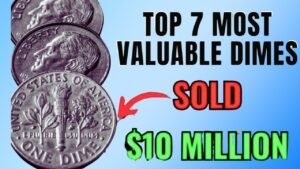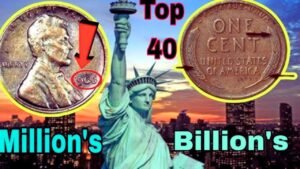Have you ever pulled a quarter from your pocket and wondered if it’s worth more than 25 cents? The 1776-1976 Bicentennial Quarter, minted to celebrate America’s 200th birthday, is common. But rare versions with errors or special features can fetch thousands. Let’s dive into what makes these coins valuable and how to spot one.
The Story Behind the Bicentennial Quarter
The U.S. Mint created the Bicentennial Quarter in 1976. It honors the Declaration of Independence with dual dates: 1776-1976.
Over 1.6 billion were made, so most are not rare. The reverse shows a colonial drummer boy, replacing the usual eagle. This design change excited collectors at the time.
Why Some Bicentennial Quarters Are Worth Big Money
Rarity and condition drive coin values. While billions exist, mistakes during minting create treasures.
For example, errors like double dies or wrong metals boost worth. One such quarter recently sold for $20,000 at auction.
Collectors hunt these anomalies. Even without errors, proof versions in top shape can sell for hundreds.
Common Valuable Features to Look For
Unusual compositions stand out. Some quarters were struck on silver instead of copper-nickel.
Double-die errors show blurred letters or dates. Off-center strikes mean the design is shifted.
Missing clad layers expose copper cores. These quirks make coins unique and pricey.
Real-Life Examples of High-Value Sales
In 2023, a double-die obverse quarter graded MS-66 sold for $19,200.
Another with a broadstruck error fetched $1,500. Silver proofs often go for $10 to $50, but gems hit $100+.
These sales show potential. Always check recent auction data for current trends.
How to Check If Your Quarter Is Valuable
Don’t toss old change yet. Simple tests can reveal hidden gems.
Start at home, then seek pros. Here’s a step-by-step guide.
Step-by-Step Inspection Tips
- Examine the Color: Standard quarters are silver-toned. Golden hues might indicate rare metals.
- Weigh It: Use a precise scale. Normal weight is 5.67 grams; deviations signal errors.
- Magnet Test: Real silver or gold won’t stick. Copper-nickel might react slightly.
- Look for Doubling: Use a magnifying glass on “LIBERTY” or dates.
- Check Edges: Reeded edges should be even; irregularities could mean value.
Tools and Resources for Beginners
Grab a loupe for close views. Apps like PCGS CoinFacts help identify varieties.
Join online forums like Reddit’s r/coins for advice. Books on U.S. quarters offer deep dives.
Types of Collectible Bicentennial Quarters
Not all valuables are errors. Some minted versions shine.
Silver proofs from San Francisco (S mint mark) are popular. They contain 40% silver.
Clad business strikes are common but high-grade ones (MS-67+) sell well.
A Quick Value Guide Table
| Type of Quarter | Average Value ( circulated ) | High-Grade Value (MS-65+) | Record Sale |
|---|---|---|---|
| Standard Clad | $0.25 | $5–$10 | $50 |
| Silver Proof (1976-S) | $4–$6 | $10–$20 | $100+ |
| Double-Die Obverse | $20–$50 | $200–$500 | $20,000 |
| Off-Center Strike | $50–$100 | $500–$1,000 | $5,000 |
| Wrong Metal (e.g., Silver Planchet) | $100+ | $1,000+ | $10,000+ |
Values vary by market. Use sites like eBay or Heritage Auctions for updates.
Myths vs. Facts: The $2.5 Billion Quarter Legend
Rumors swirl about a ultra-rare gold-platinum Bicentennial Quarter worth billions. But experts call this a myth.
No verified examples exist. It’s likely confusion with other rare coins or hype.
Stick to proven valuables. Focus on authenticated errors for real payouts.
FAQs About Bicentennial Quarters
What makes a 1776-1976 quarter valuable?
Errors like double dies, off-centers, or silver compositions increase value. Condition and rarity matter most.
How can I tell if my Bicentennial Quarter is silver?
Check for an “S” mint mark. Weigh it—silver versions are slightly heavier. They also have a brighter shine.
Where can I sell a valuable quarter?
Use reputable dealers, auctions like Heritage, or grading services like PCGS/NGC. Avoid pawn shops for best prices.
Are all Bicentennial Quarters worth more than face value?
No, most circulated ones are just 25 cents. Only errors or proofs add significant value.
How do I get my coin graded?
Send it to PCGS or NGC. Fees start at $20–$50. Grading confirms authenticity and boosts sale prices.
Is the $2.5 billion quarter real?
It’s a legend with no proof. Real high values top out around $20,000 for top specimens.
Start Hunting for Your Treasure Today
The Bicentennial Quarter reminds us of America’s history—and potential riches in plain sight. Grab your change jar and inspect those quarters. You might uncover a keeper worth thousands. If not, you’ve gained fun knowledge. Happy collecting! Share your finds in the comments below.




